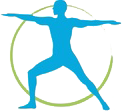
How ‘text neck’ is becoming a real pain for smartphone users
Modern technology has changed how we access information-from news and views, to social media and television programmes, thanks to the creation of handheld devices like smart phones and tablets, we literally have all this at our fingertips.
But with the huge increase of this kind of technology inevitably comes problems. The term ‘text neck’, which was coined more than 10 years ago, refers to musculoskeletal pain caused by looking down at your phone or tablet too frequently or for long periods of time.
And its no wonder text neck is becoming a widespread issue. According to finder.com.
in 2020 the average Brit spent a total of four hours and two minutes online per day, with over two thirds (71%) of this time being spent online on their smartphone. This amounts almost three hours on a smartphone each day.
Research studies have also highlighted the link between smartphone usage and musculoskeletal pain, with one finding that almost 60 per cent of participants reported symptoms during or after device use, with neck pain being the most prevalent issue.
So what exactly are the symptoms of ‘text neck’? The main problems experienced are:
● Pain in the neck, shoulders and/ or upper back. The pain could be intense and specific to one part of the upper body, or it could be a general ache across a wider area.
● Forward head posture and rounded shoulders. Tilting the head forwards places extra weight on the neck – bending you neck forward just 15 degrees can double the weight of your head for your body. This can cause imbalances to the muscles in the neck, chest and upper back. As the muscles weaken, it can become increasingly difficult to maintain a good, upright posture.
● Reduced mobility. Muscle stiffness and tightness may be experienced across the neck, upper back and shoulders, limiting mobility in these areas.
● Headache. Muscle tightness around the neck area can cause tension type headaches from the pain spreading upwards, as well as eyestrain from excessive screen usage increasing the risk of headaches
● Pain on neck flexion. Text neck symptoms tend to worsen when the neck is flexed forward into the position that originally caused the problem, such as while looking down and texting
● Spine wear and tear – repeatedly adopting the ‘head forwards’ position for prolonged periods of time can cause long-term cervical spine wear and tear and degeneration.
So is there anything that can be done to prevent ‘text neck’ becoming a problem? We know that not using our handheld devices is the simplest way. However, in reality, this isn’t really an option. What we can do, is make sure we get into good habits to prevent the pain that comes with text neck.
Therefore, with some relatively simple changes, the risk of suffering from pain during or after mobile phone or tablet usage can be reduced significantly. Things to try include:
● Raise the screen higher – simply holding your phone higher at around eye level will prevent the need for the head forwards position. If this is difficult and causes aches in your arm, you can place your device in a holder that elevates it to the correct level without the need for holding
● Set time limits. When possible, be strict with how much time you spend at your device. Set an alarm if you need to, even if it’s just to take a short break to give yourself some time away to rectify your posture and stretch out your muscles
● Exercise. If you have found yourself at a handheld device for a long period of time, it’s important to get up and move to loosen any muscles that may have been affected as a result of your posture. Not only that, but strengthening your muscles overall through exercising will enable them to endure more stress.
Physiotherapy can also help to alleviate symptoms of text neck and we would always recommend seeing a physiotherapist if you are experiencing text neck or any other issues associated with the overuse of handheld devices.
A physiotherapist will carry out a detailed examination to determine the exact cause of the problem and, as a result, can devise a programme of treatment, which will usually consist of postural correction techniques and a range of exercises and muscle stretches specific to your particular needs. This will help to reduce pain and increase mobility in the joints and muscles, promoting recovery as effectively as possible.
If you’d like any advice or you think you’d benefit from seeing one of our team here at Physiomove, contact us today.











